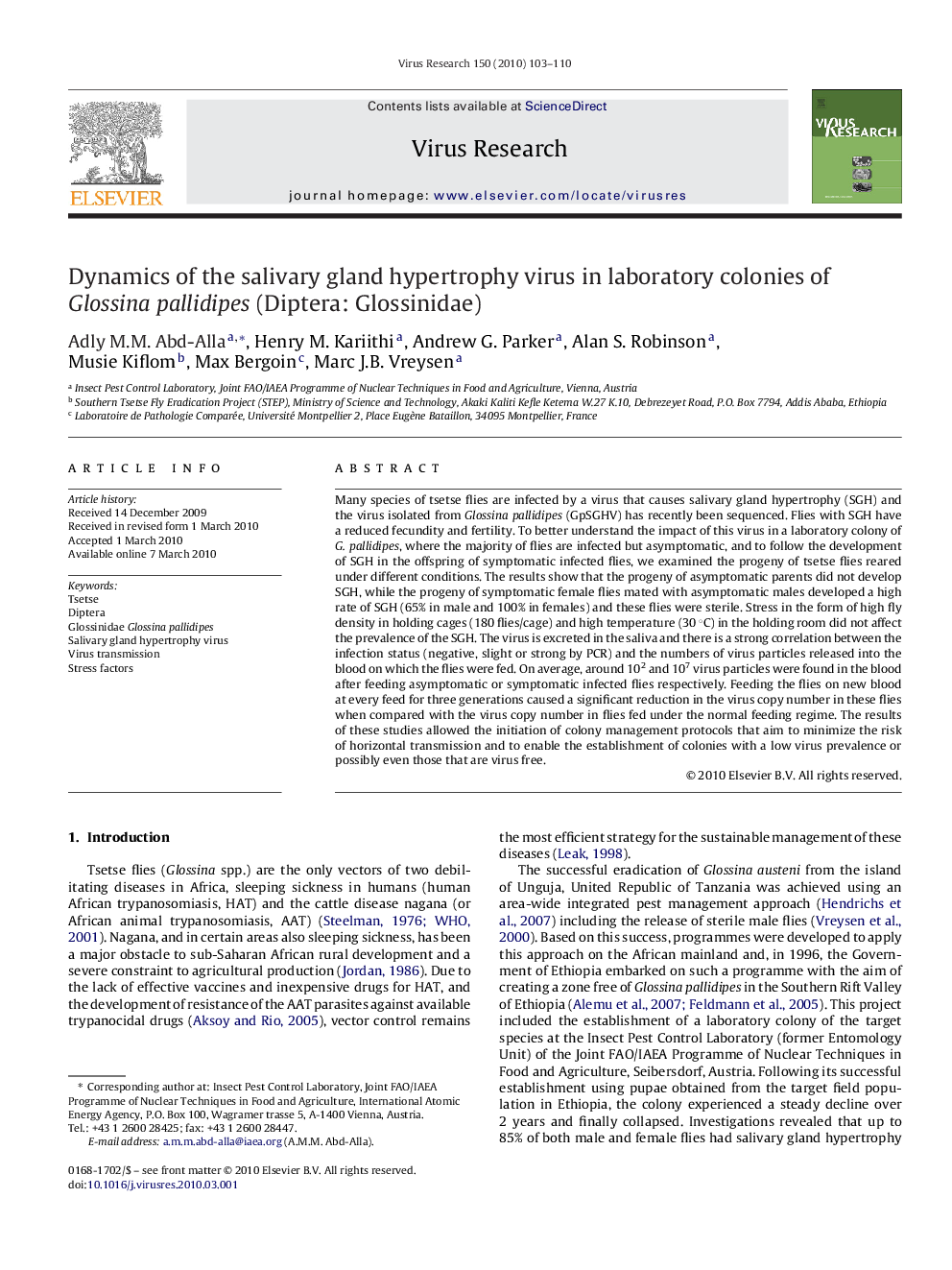| کد مقاله | کد نشریه | سال انتشار | مقاله انگلیسی | نسخه تمام متن |
|---|---|---|---|---|
| 3429293 | 1594392 | 2010 | 8 صفحه PDF | دانلود رایگان |

Many species of tsetse flies are infected by a virus that causes salivary gland hypertrophy (SGH) and the virus isolated from Glossina pallidipes (GpSGHV) has recently been sequenced. Flies with SGH have a reduced fecundity and fertility. To better understand the impact of this virus in a laboratory colony of G. pallidipes, where the majority of flies are infected but asymptomatic, and to follow the development of SGH in the offspring of symptomatic infected flies, we examined the progeny of tsetse flies reared under different conditions. The results show that the progeny of asymptomatic parents did not develop SGH, while the progeny of symptomatic female flies mated with asymptomatic males developed a high rate of SGH (65% in male and 100% in females) and these flies were sterile. Stress in the form of high fly density in holding cages (180 flies/cage) and high temperature (30 °C) in the holding room did not affect the prevalence of the SGH. The virus is excreted in the saliva and there is a strong correlation between the infection status (negative, slight or strong by PCR) and the numbers of virus particles released into the blood on which the flies were fed. On average, around 102 and 107 virus particles were found in the blood after feeding asymptomatic or symptomatic infected flies respectively. Feeding the flies on new blood at every feed for three generations caused a significant reduction in the virus copy number in these flies when compared with the virus copy number in flies fed under the normal feeding regime. The results of these studies allowed the initiation of colony management protocols that aim to minimize the risk of horizontal transmission and to enable the establishment of colonies with a low virus prevalence or possibly even those that are virus free.
Journal: Virus Research - Volume 150, Issues 1–2, June 2010, Pages 103–110